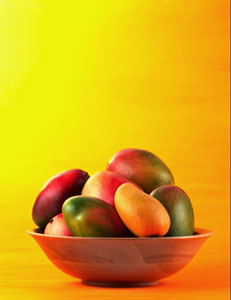A lesson plan on American lamb leg, presented at the 2007 CAFÉ Leadership Conference
By Mark M. DeNittis- Courtesy of the American Lamb Board
 This comprehensive lesson plan provides a basic understanding of American lamb, with a particular focus on the leg, from farm to plate. Topics include product acquisition, leg cuts and fabrication, safe handling and sanitation, best applied cooking techniques and methods, nutrition, and ideal flavors to marry with American lamb, as well as discussion questions.
This comprehensive lesson plan provides a basic understanding of American lamb, with a particular focus on the leg, from farm to plate. Topics include product acquisition, leg cuts and fabrication, safe handling and sanitation, best applied cooking techniques and methods, nutrition, and ideal flavors to marry with American lamb, as well as discussion questions.
Mark M. DeNittis is a chef instructor at Johnson & Wales University in Denver, and he delivered this lesson plan as a workshop to educators attending the 2007 CAFÉ Leadership Conference at Scottsdale Culinary Institute in Scottsdale, Ariz., in June. The lesson plan is suitable for student cooks, and the 11-page Word document is easy to output and copy for distribution. See the end of the document for additional sources of information on American lamb.

 Center-of-the-plate proteins, including American lamb, are the focus of this lesson plan for freshman in the Associate of Applied Science degree program at Southern Maine Community College in South Portland. The course, of which this lesson is a part, addresses the basic fabrication of meat, fish and poultry; stocks; the five major sauces; derivative sauces; coulis, jus lié, and reductions. The class covers moist and dry methods of cooking that demonstrate appropriate cooking methods for a wide array of products.
Center-of-the-plate proteins, including American lamb, are the focus of this lesson plan for freshman in the Associate of Applied Science degree program at Southern Maine Community College in South Portland. The course, of which this lesson is a part, addresses the basic fabrication of meat, fish and poultry; stocks; the five major sauces; derivative sauces; coulis, jus lié, and reductions. The class covers moist and dry methods of cooking that demonstrate appropriate cooking methods for a wide array of products.  As the demographic of culinary schools shifts to a much more multicultural environment, embracing and celebrating cultural diversity is becoming part of the everyday life of culinary institutions. The challenge for culinary instructors is in finding a way to integrate cultural diversity into the curriculum in a tacit manner, one in which students might not recognize the true objectives, yet at the same time, achieve a sense of accomplishment and pride in their own cultural heritage and cuisine.
As the demographic of culinary schools shifts to a much more multicultural environment, embracing and celebrating cultural diversity is becoming part of the everyday life of culinary institutions. The challenge for culinary instructors is in finding a way to integrate cultural diversity into the curriculum in a tacit manner, one in which students might not recognize the true objectives, yet at the same time, achieve a sense of accomplishment and pride in their own cultural heritage and cuisine. Shirley P. Rauh, FACS chair at Lutheran High School South in St. Louis, submitted the following Lesson Plan as a “teaching tip” entry in the 2007 CAFÉ Scholarship program that awarded four winners grants toward registration at a CAFÉ workshop or the Leadership Conference this summer.
Shirley P. Rauh, FACS chair at Lutheran High School South in St. Louis, submitted the following Lesson Plan as a “teaching tip” entry in the 2007 CAFÉ Scholarship program that awarded four winners grants toward registration at a CAFÉ workshop or the Leadership Conference this summer.  This comprehensive lesson plan provides a basic understanding of American lamb, with a particular focus on the leg, from farm to plate. Topics include product acquisition, leg cuts and fabrication, safe handling and sanitation, best applied cooking techniques and methods, nutrition, and ideal flavors to marry with American lamb, as well as discussion questions.
This comprehensive lesson plan provides a basic understanding of American lamb, with a particular focus on the leg, from farm to plate. Topics include product acquisition, leg cuts and fabrication, safe handling and sanitation, best applied cooking techniques and methods, nutrition, and ideal flavors to marry with American lamb, as well as discussion questions.  Presented by Avocados from Mexico
Presented by Avocados from Mexico Contrary to popular belief, the mango is available any time of year, and the Orlando, Fla.-based National Mango Board (NMB) has made it its mission to educate U.S. consumers on selection and preparation of the world’s most consumed fruit. Since 1995, mango consumption has increased by 100% in the United States (U.S. Outlook Report 2004). Approximately only 30% of U.S. households consume mangos today, however.
Contrary to popular belief, the mango is available any time of year, and the Orlando, Fla.-based National Mango Board (NMB) has made it its mission to educate U.S. consumers on selection and preparation of the world’s most consumed fruit. Since 1995, mango consumption has increased by 100% in the United States (U.S. Outlook Report 2004). Approximately only 30% of U.S. households consume mangos today, however.